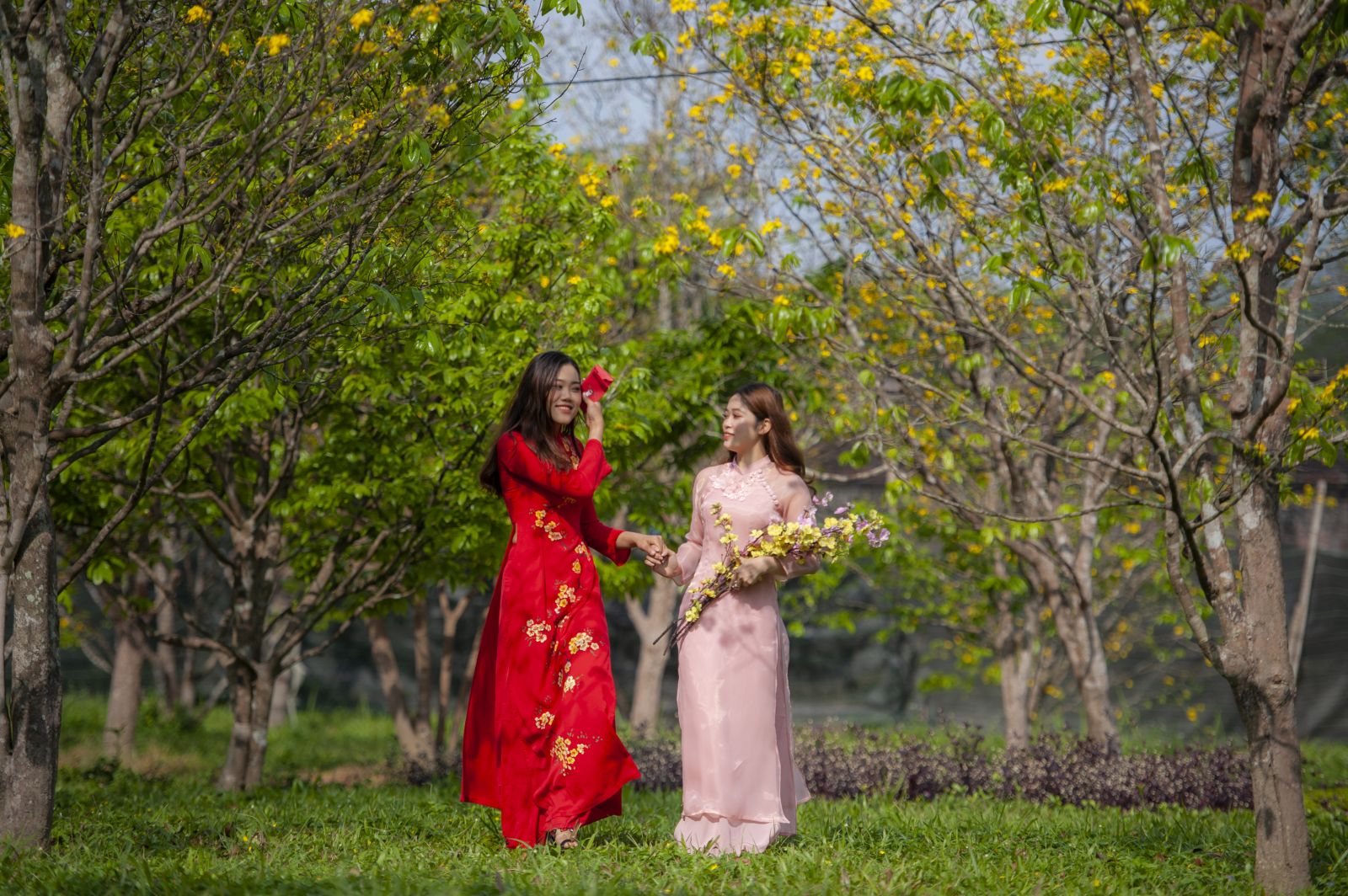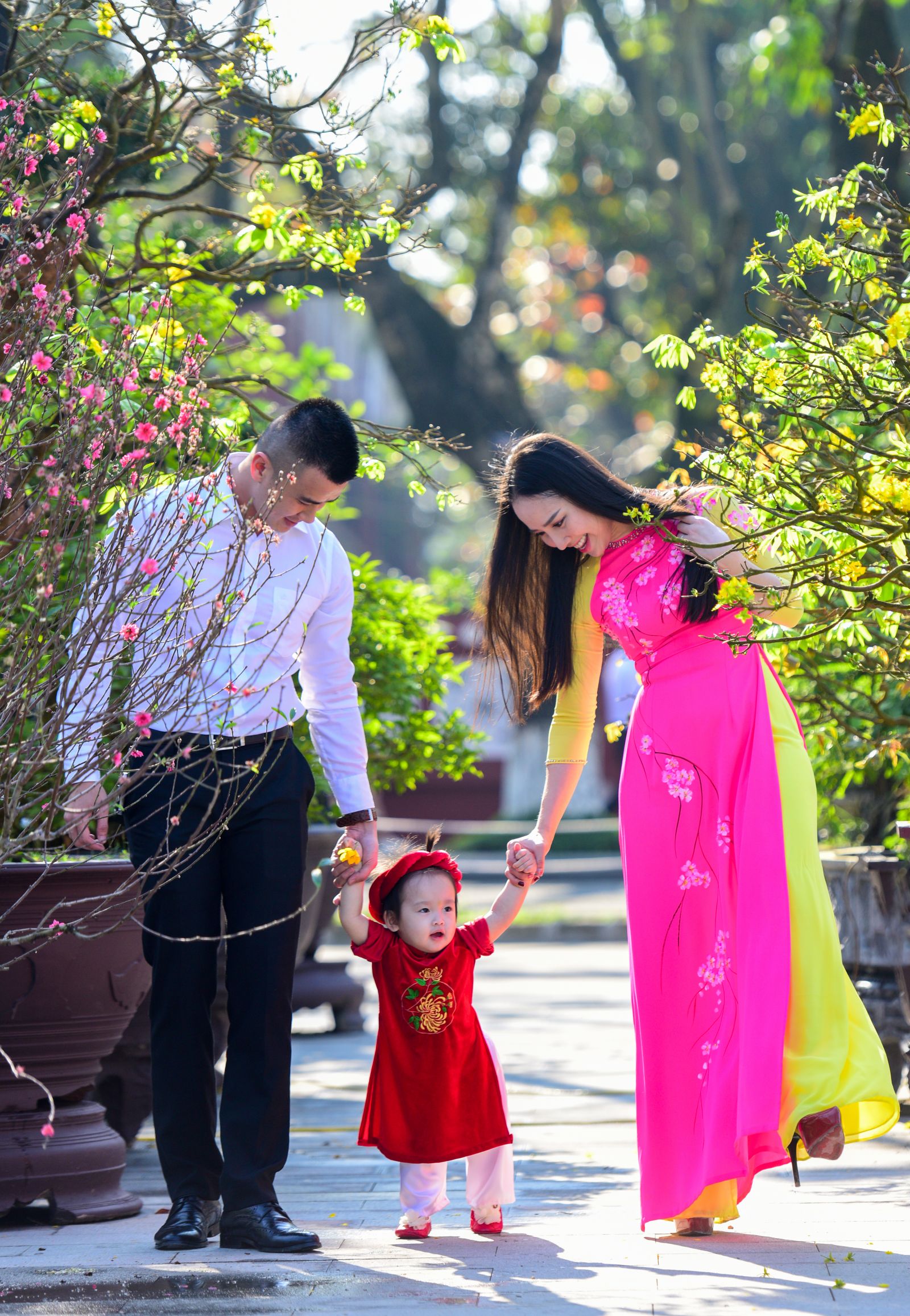
Photo: Hoang Hai
Just one day after the recent symposium on "Hue – the Capital of Ao Dai Vietnam", Hue Monuments Conservation Center in collaboration with the Board of Directors of the Nguyễn Phúc clan held a solemn ceremony to celebrate the 255th death anniversary of the Martial Lord Nguyễn Phúc Khoát (1765 - 2020) at Trường Thái tomb and Triệu Tổ Miếu (The Temple of Original Ancestor).
The graceful image of ao dai like the butterfly’s wings was seen on the surface of Ngọc Lũ and Hòa Bình bronze drums some 3,000 years ago. However, with little surprise, the history of ao dai only goes back in 1774 when the Martial Lord Nguyễn Phúc Khoát issued an edict specifying the attire for people in Đàng Trong (the Inner Realm).
It was when ao dai (the five-paneled tunic) was specified: “For casual occasions, men and women wear tunics with standing collar and above-wrist sleeves of varied widths. The seam from two armholes downwards must be sown without cut-outs. Men are allowed to skip round neck and narrow sleeved tunics for more convenience at work” (extracted from Đại Nam Thực lục tiền biên – the Chronicles of Đại Nam – the previous part). Over 50 years later, Emperor Minh Mạng undertook a drastic attire reform and made ao dai a popular costume nationwide.
Every nation in the world has a traditional costume that easily reveals the wearer’s nationality. If the Japanese takes pride in Kimono, the Korean in Hanbok, and the Chinese in cheongsam then the Vietnamese proudly wear ao dai as their national costume.

Photo: Hoang Hai
Over 250 years, ao dai Vietnam has gone through a long journey. Hence, the ceremony in tribute to the Martial Lord Nguyễn Phúc Khoát is to honor his merits in forming ao dai and identifying Hue as the cradle of ao dai Vietnam.
In excitement, people constantly talk about building ao dai brand identity and value. And I recalled designer Sĩ Hoàng’s thought when he believed ao dai was the Vietnamese wearing culture, and to preserve that culture, it must be worn. Wearing ao dai is not only a charm but also a responsibility of each citizen. Only by being a part of the daily life can culture be embraced and fostered, so no one but we are supposed to maintain our culture.
I believe Hue locals are fully aware of this as they have eagerly responded to the call of the Chairman of the Provincial People's Committee Phan Ngọc Thọ issued to encourage white-collar workers, teachers and students all over the province to wear ao dai at least twice a week. People have caught sight of Mr. Thọ and other provincial leaders formally and stylishly dressed up in ao dai and turban for men in the tribute ceremony to the Martial Lord Nguyễn Phúc Khoát, in welcoming parties for international visitors, and other key festivals in Hue - the Capital of Mystery.
By Dan Duy
